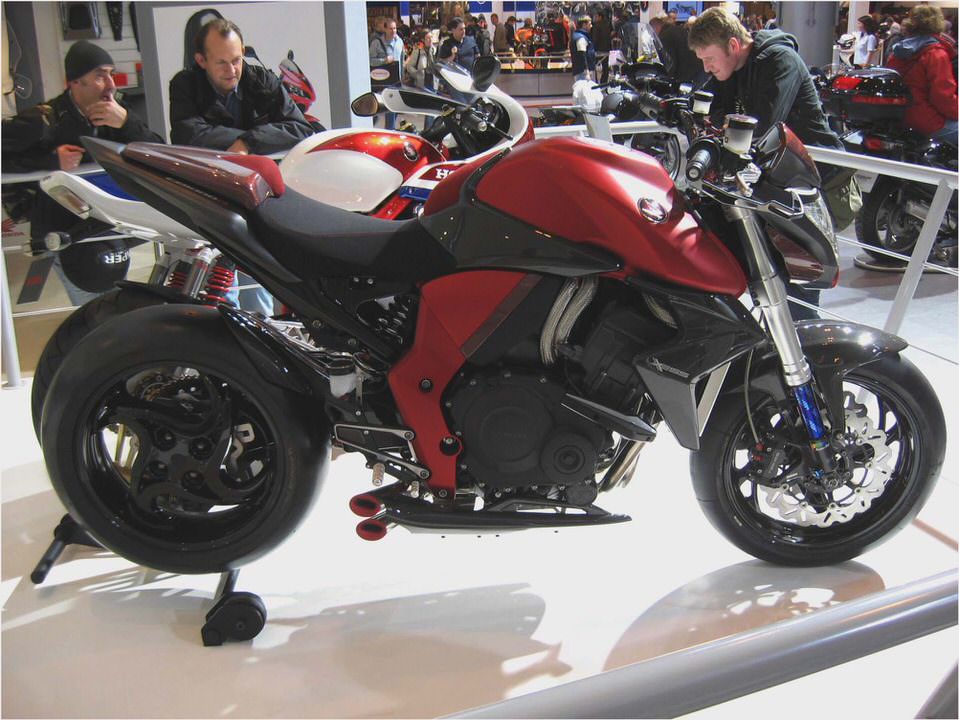
2009 Honda CB1000R – Road Test Forbidden Fun: The best Honda you can’t buy!
Props to Honda for building a nice chopper that works. Major credit for also giving us an auto-trans-equipped motorcycle/scooter-like transport device that has to be one of the easiest-to-ride full-size two-wheelers ever.
But, honestly, Honda, why are you holding out on us?
Rave reviews greeted the CB1000R upon its introduction in Europe last year. In fact, this CBR1000RR-based naked bike finished second in 2008′s International Bike of the Year voting, and we in the U.S. who are deprived of the bike didn’t even get to vote for it!
Some notable quotes from the European scribes? “A giant step for Honda in the naked category,” said Bike Scandinavia. “Clearly outshines the competitors with its flawless engine, good brakes and sharp handling.”
Editors at Belgium’s Motor Wereldwere equally full of praise, even if they get off to a reserved start: “In numbers, the CB1000R isn’t exactly the sort of bike that pulls the rug from under your feet. This is applicable to both the engine and the chassis. However, riding it makes you realize just what a finely balanced bike Honda’s youngest naked really is; a balance that adds up to precise, easy and fun handling. Factor in a torquey, sweet-running engine and there it is, thenaked bike of the year.”
So we decided to see for ourselves what all the fuss was about and booked a flight to Europe. We finagled a bike out of Honda Austria and checked in with our friends at Edelweiss Bike Travel for a proper Alps tour, something we could really sink our footpeg feelers into. Edelweiss’ Alps Touring Center offered a week of day-loops over some of the best Alpine passes, plus some very cool sightseeing stops, all departing from of the same hotel each day.
The trip of a lifetime, in other words, and even better on a bike like the CB1000R. This Dragon Green Metallic machine debuted in 2007 at the Milan show, rolling out as a replacement for the aging Hornet 900, known as the 919 stateside. This wasn’t a warmed-over version of that older design, but rather a new bike that utilized the compact cast-aluminum Hornet 600 frame with a re-engineered ’07 CBR1000RRengine.
It’s definitely re-engineered, too. All you have to do is look at the intake setup, which is nearly horizontal, rather than the steep downdraft used on the CBR. Throttle bodies for the PGM-FI are 36mm, down significantly from 44mm, and compression is lower by a full point at 11.2:1.
End result of these changes is a claimed output of 123 horses at 10,000 rpm and 74 foot-pounds of torque at 8000 revs, putting it in the ballpark with other bikes in the one-liter naked/streetfighter class.
Really going at it in the Alps is typically not the recommended procedure. On the higher passes, there is always a lot to be wary of, from cows (and their waste products) on the road to buses, rubbernecking sightseers in the most underpowered compact cars you’ve ever seen, cyclists and just about anything else you wouldn’t want to run into at a full 10/10ths clip. So, an attenuated “Alps Pace” takes it back a notch to allow for a safety margin but remains swift.
In these conditions, the CB1000R’s powerplant is nearly ideal. Power begins to sizzle at 6500 but is nonetheless usefully torquey below that threshold. Let the engine breathe to its 10,250-rpm redline as indicated on the easy-to-read LCD bar-graph tachometer and you’re greeted with a powerband that is stout and linear.
It supplies the kind of urge that definitely keeps things interesting when corners begin to come up surprisingly—and deceptively—quickly, as they do in the Alps.
While this is a superb sporting engine, almost more amazing is its smoothness and tractability. I literally let the bike idle through towns in sixth gear, running without a hiccup with no throttle at 1200 rpm and less than 20 mph, and then could roll on the gas and pull smoothly away. Don’t try that on yourKTM Super Duke,Ducati Monster V-TwinorBuell 1125CRnaked bikes!
Despite the engine’s willingness and flexibility, the gearbox shifts so effortlessly and precisely that I found myself clicking through the gears for pure entertainment value or just to pass somebody with real authority using the fat midrange, even though most of the time I could zap traffic in a taller gear. Hot or cold, at low altitude or high, fuel mapping and throttle response were excellent. This is a great engine.
It would be a shame to put a powerplant like this in anything less than an excellent chassis. There is no shame here! This standard has pretty standard geometry, with classic 25-degree rake working with 4.0 inches of trail. Wheelbase is a reasonably compact 58.9 inches.
Steering is medium-weighted, and high-speed stability on the autobahn was excellent. I wouldn’t call this a hard-edge, aggressive machine, but shredding up some of the greatest mountain roads in the world was so much fun and so easy that anything that may have been given up in outright, snap-down-to-the-apex personality is more than made up for in ease of use and neutrality of steering. And you can go really, really fast.
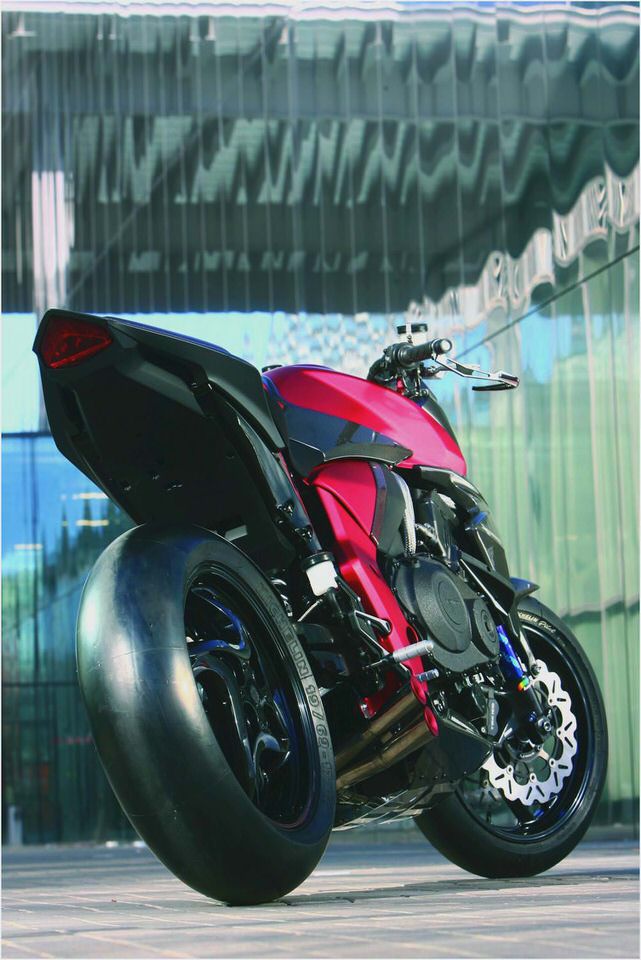
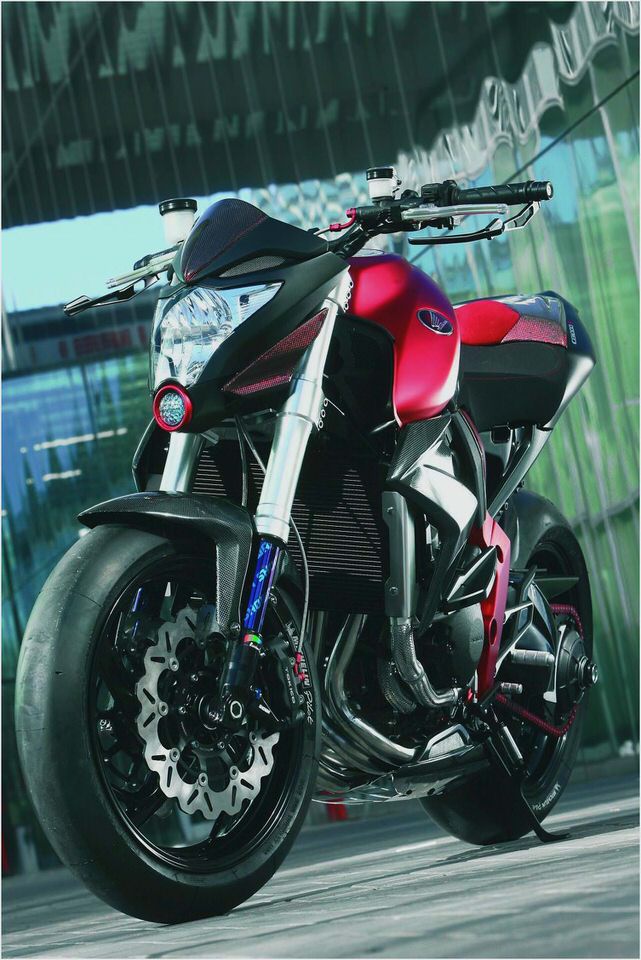
Damping from the fully adjustable inverted Showa 43mm HMAS fork (derived from the CBR1000RR) and the single, preload- and rebound-adjustable shock was comfortably taut, meaning a smooth, controlled ride allied with very little chassis pitching from bumps, braking or acceleration. At anything less than full-charge mode, it is hard to get this bike to do anything wrong. Even at the ragged edge, control remains very good, though composure suffers a little.
Braking, too, was impressive. Our ABS-equipped bike has the linked setup that uses a pair of three-piston, sliding-pin calipers at the front, with a two-piston sliding-pin unit at the rear. (These are “conventional” ABS brakes, not thenew CBR-RR supersport type.) Braking feel is good but not excellent. Back home, we briefly tried and liked the four-piston front calipers (as used on the standard CBR1000RR) of the non-ABS model.
Still, stops on the ABS bike were sure and utterly consistent, and even with the linked setup, it was easy to drag the rear brake lightly on first-gear hairpins to settle the bike and tighten the cornering line. Bridgestone BT015s (120/70ZR17 at the front and 180/55ZR17 at the rear) offered good grip, even in less than perfect riding conditions.
After three day-long stints in the saddle, I never once thought of the seat or any of my interface points with the CB1000R. Ergonomics are very comfortable, the levers for the front brake and hydraulic clutch offered adjustment within a useful range, and even the wind protection from the large headlight/mini-cowl was helpful.
Claimed full-fuel-tank curb weight for our Combined-ABS testbike is 489 pounds (478 for non-ABS). Subtract about 28 pounds for gas and you get 461 pounds. Itlookslighter than this and definitely rides lighter.
Styling has a European edge with a light polishing from the home office. The single-sided swingarm and swirling rear wheel coordinate well with the CBR1000RR-inspired stubby exhaust outlet and the tightly packed nature of this bike. Even the docked tail works here, although the passenger seat size suffers, and therefore so will your passenger.
Kicxstartmagazineof the Netherlands sums it up pretty well: “Stunning looks, brilliant handling, smooth but very fierce performance and bulletproof reliability for a real-world price. The CB1000R is a model that shows it must have been developed by a team that really loves their jobs.”
Well, we concur on everything but the price. Because the unfortunate part of the equation for us is that this bike was conceived in Europe for Europe, and manufactured by Honda Italy. The previous 599 and 919 also came from the same background.
While the 919 was competitively priced if rather sedately styled, the 599 was quite a bit more expensive than competing machines. At the current exchange rate, CB1000R pricing in Europe (excluding the Value Added Tax) is running about $11,200 for the standard bike and $11,700 for the C-ABS model. With competing bikes like theYamaha FZ1andTriumph Speed Triplecoming in under $10,000 over here, it appears the economic argument for bringing in the CB1000R might be a little tough.
But this is the kind of modern, sporting Universal Japanese Motorcycle a company such as Big Redshouldoffer in the U.S. So, American Honda, please make it a good argument! Don’t hold out on us: We need this bike…
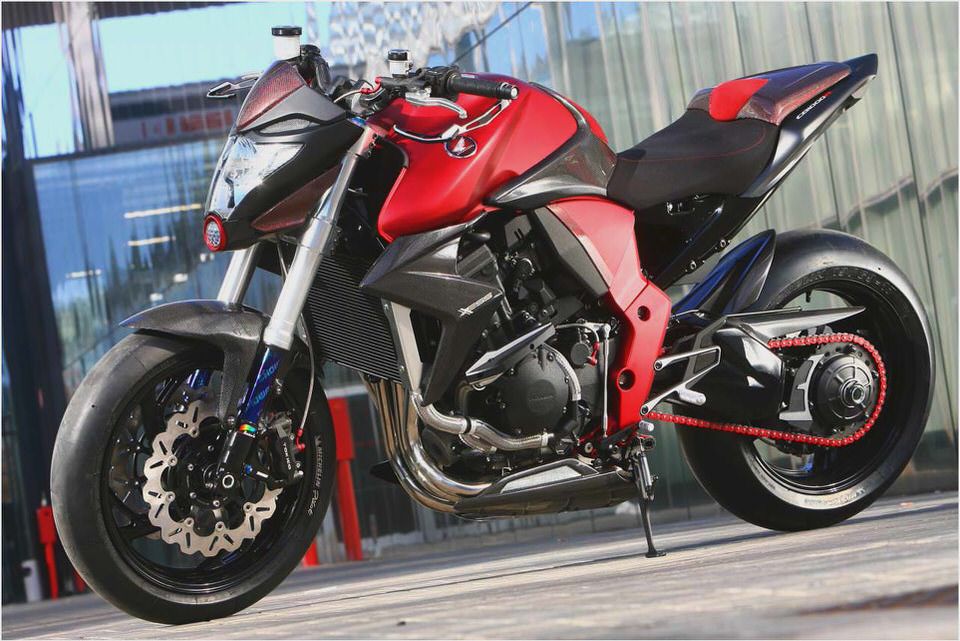
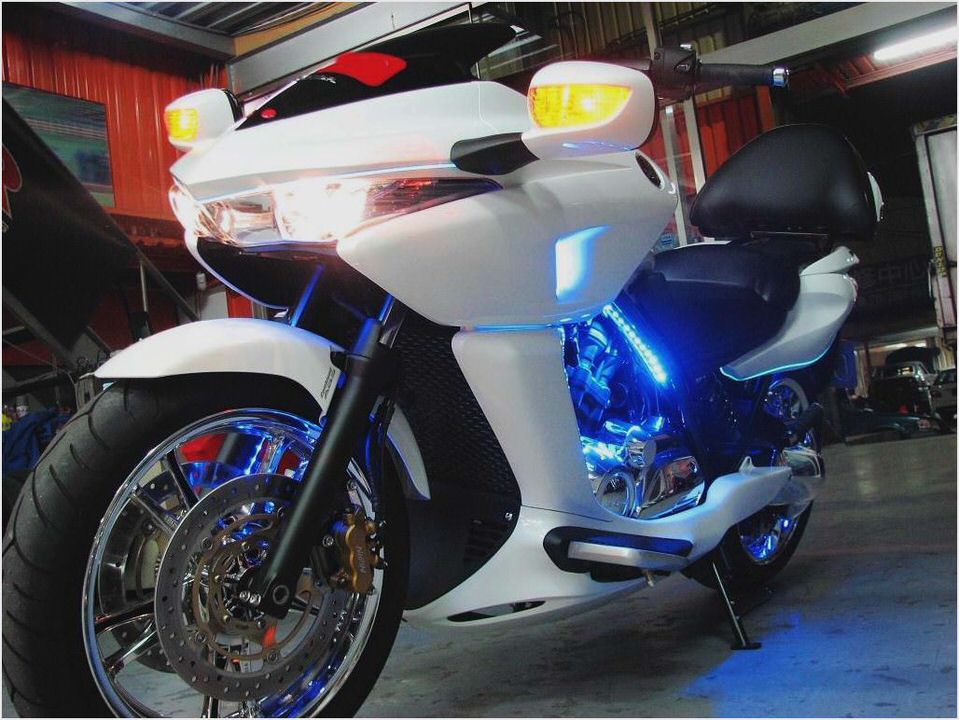
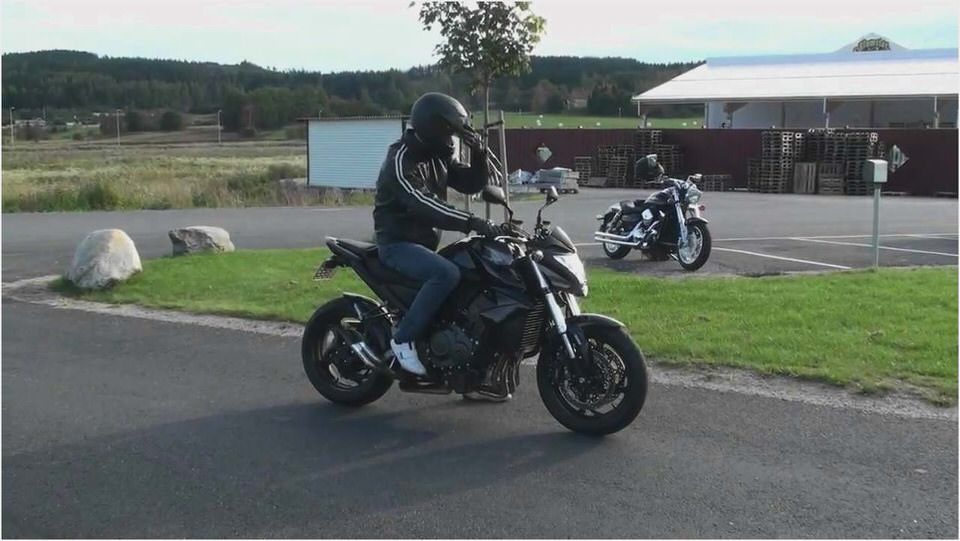
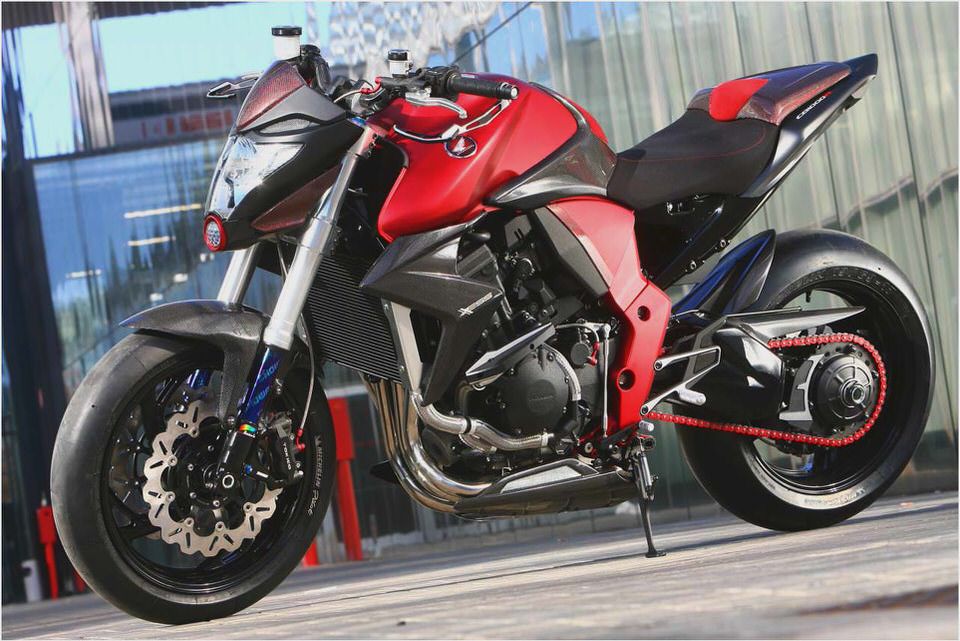

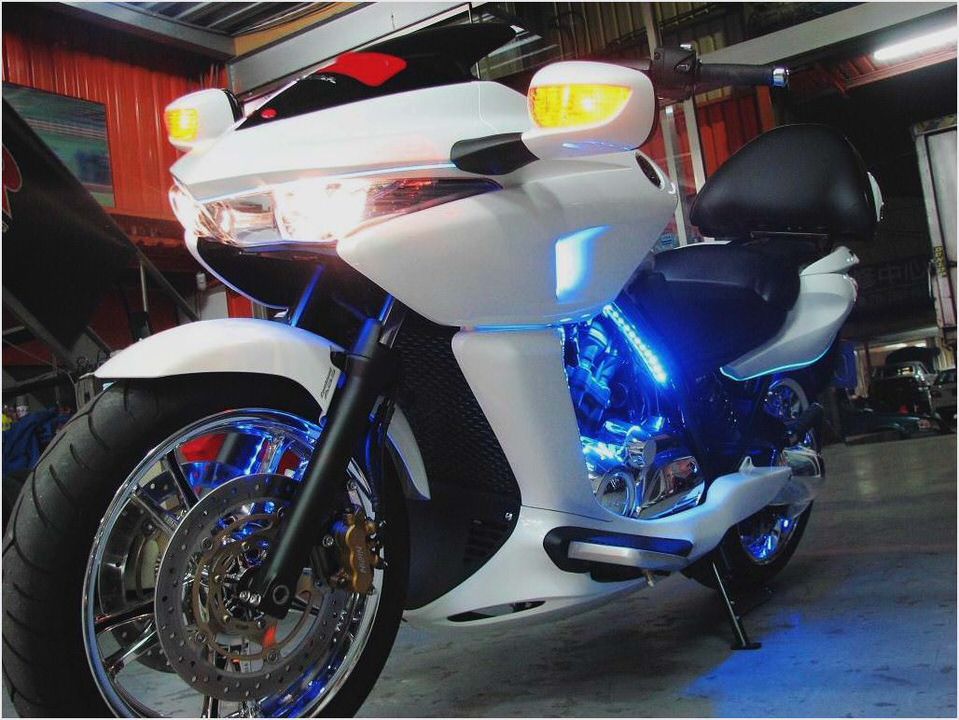
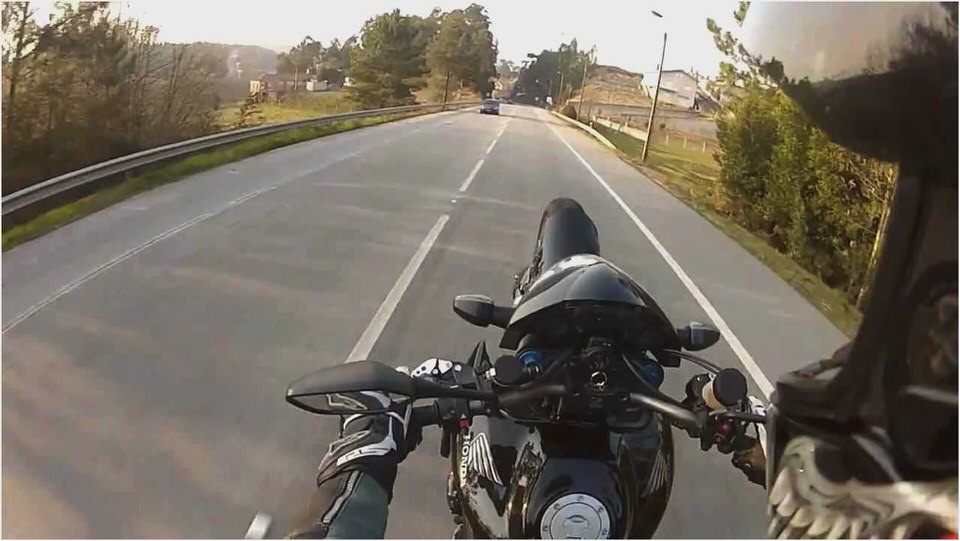
- Honda CB450 – Video Encyclopedia
- Specs for the 2006 Honda FourTrax Foreman 4×4 ES 500FE eHow
- The Performance of the Honda Goldwing 1500 eHow
- Honda XL/XR125, XL/XR185, XL/XR200, XR200R, TLR200 Repair Manual
- 2009 Honda Accord EX-L V6 Review: Car Reviews

